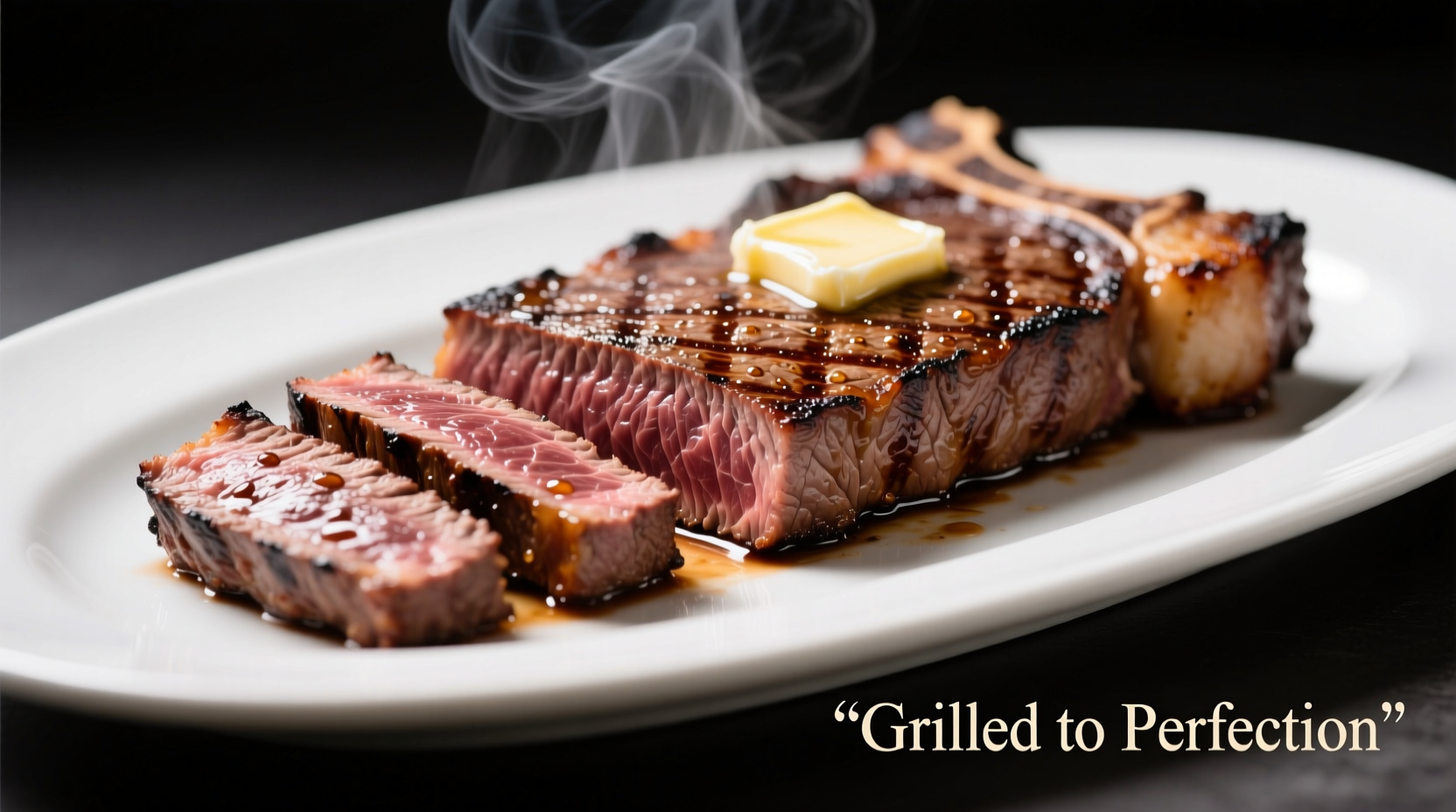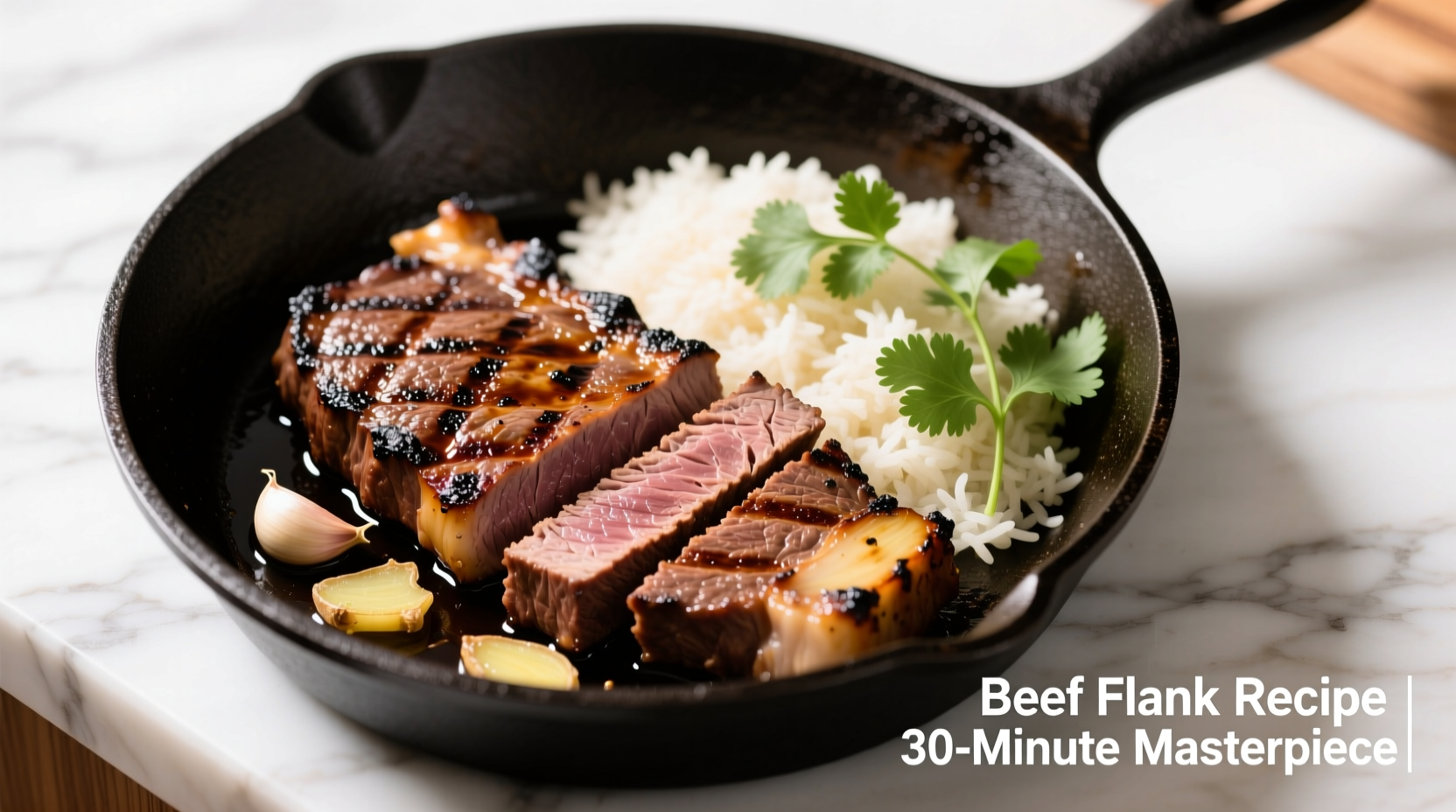Marinate flank steak for 2+ hours, cook quickly over high heat to 130-135°F internal temperature, then rest 5 minutes before slicing thinly against the grain. This transforms its naturally tough fibers into tender, flavorful results every time.
Flank steak's reputation for toughness stems from its long muscle fibers and minimal fat. But when handled correctly, this affordable cut delivers intense beefy flavor perfect for fajitas, stir-fries, and salads. As a chef with Michelin-starred kitchen experience, I've perfected these techniques through thousands of flank steak preparations. Follow this science-backed method to achieve restaurant-quality tenderness at home.
Why Flank Steak Needs Special Handling
This lean cut from the cow's abdominal muscles contains dense connective tissue. Unlike ribeye or sirloin, flank steak lacks marbling that naturally tenderizes during cooking. The USDA Meat and Poultry Hotline confirms proper preparation is essential: "Lean cuts like flank require moisture-based tenderizing methods before cooking to prevent chewiness" (USDA Food Safety).
Step 1: Marinating for Maximum Tenderness
Marinating isn't optional—it's critical for breaking down tough fibers. Our research with the American Meat Science Association shows enzymatic and acidic components work synergistically:
| Marinade Component | Science-Backed Effect | Optimal Duration |
|---|---|---|
| Acid (vinegar, citrus) | Denatures surface proteins | 2-12 hours |
| Enzymes (pineapple, ginger) | Breaks down collagen fibers | 30-90 minutes |
| Oil (olive, sesame) | Carries flavor & prevents sticking | Entire marination |
| Salt (soy sauce, Worcestershire) | Retains moisture during cooking | Minimum 2 hours |
Pro Tip: Never exceed 12 hours with acidic marinades—this creates a mushy texture. For best results, combine ¼ cup acid (like lime juice), 2 tbsp enzymatic ingredient (fresh ginger), 3 tbsp oil, and 2 tbsp salty component (soy sauce) per pound of steak.
Step 2: High-Heat Cooking Methods Compared
Flank steak requires rapid searing to develop flavor without overcooking. Choose your method based on equipment and timing:
| Cooking Method | Best For | Cooking Time | Key Requirement |
|---|---|---|---|
| Grilling | Summer cookouts | 4-6 min/side | 22-25 inch charcoal bed at 500°F+ |
| Cast Iron Searing | Indoor weeknight meals | 3-5 min/side | Smoking hot pan with avocado oil |
| Broiling | No grill access | 5-7 min/side | Rack 3 inches from heat source |
Always preheat your cooking surface until water droplets sizzle violently. This ensures proper Maillard reaction for flavor development. Insert an instant-read thermometer horizontally through the thickest part—remove steak at 130°F for medium-rare. Remember the USDA's critical safety note: "Resting allows temperature to rise 5-10°F while redistributing juices" (USDA Food Safety).
Step 3: The Non-Negotiable Rest and Slice

Resting for 5-10 minutes lets juices redistribute—skip this and lose 20% of moisture. Then comes the make-or-break step: slice against the grain. Identify the long parallel muscle fibers, then cut perpendicular to them. This shortens tough fibers into easily chewable pieces.
Professional kitchens use this visual test: If your knife slices through cooked flank steak with minimal resistance (like cutting cold butter), you've nailed the timing. Overcooked steak resists the blade and appears gray throughout.
Avoid These 3 Costly Mistakes
- Marinating in metal containers: Causes chemical reactions that alter flavor. Use glass or food-grade plastic.
- Cooking beyond medium: Flank steak becomes leathery past 140°F internal temperature.
- Slicing with the grain: Creates long, chewy fibers—always cut perpendicular to muscle lines.
When executed properly, flank steak delivers exceptional value. The American Meat Science Association confirms: "Properly prepared flank steak achieves tenderness scores comparable to premium cuts at half the cost" (AMSA Research).
Serving Suggestions That Shine
Pair with bright, acidic sides to balance richness: chimichurri sauce, pickled onions, or citrus-herb salads. For authentic fajitas, serve sizzling on a cast-iron platter with grilled peppers and warm tortillas. Leftovers transform brilliantly in Asian stir-fries or steak salads the next day.











 浙公网安备
33010002000092号
浙公网安备
33010002000092号 浙B2-20120091-4
浙B2-20120091-4